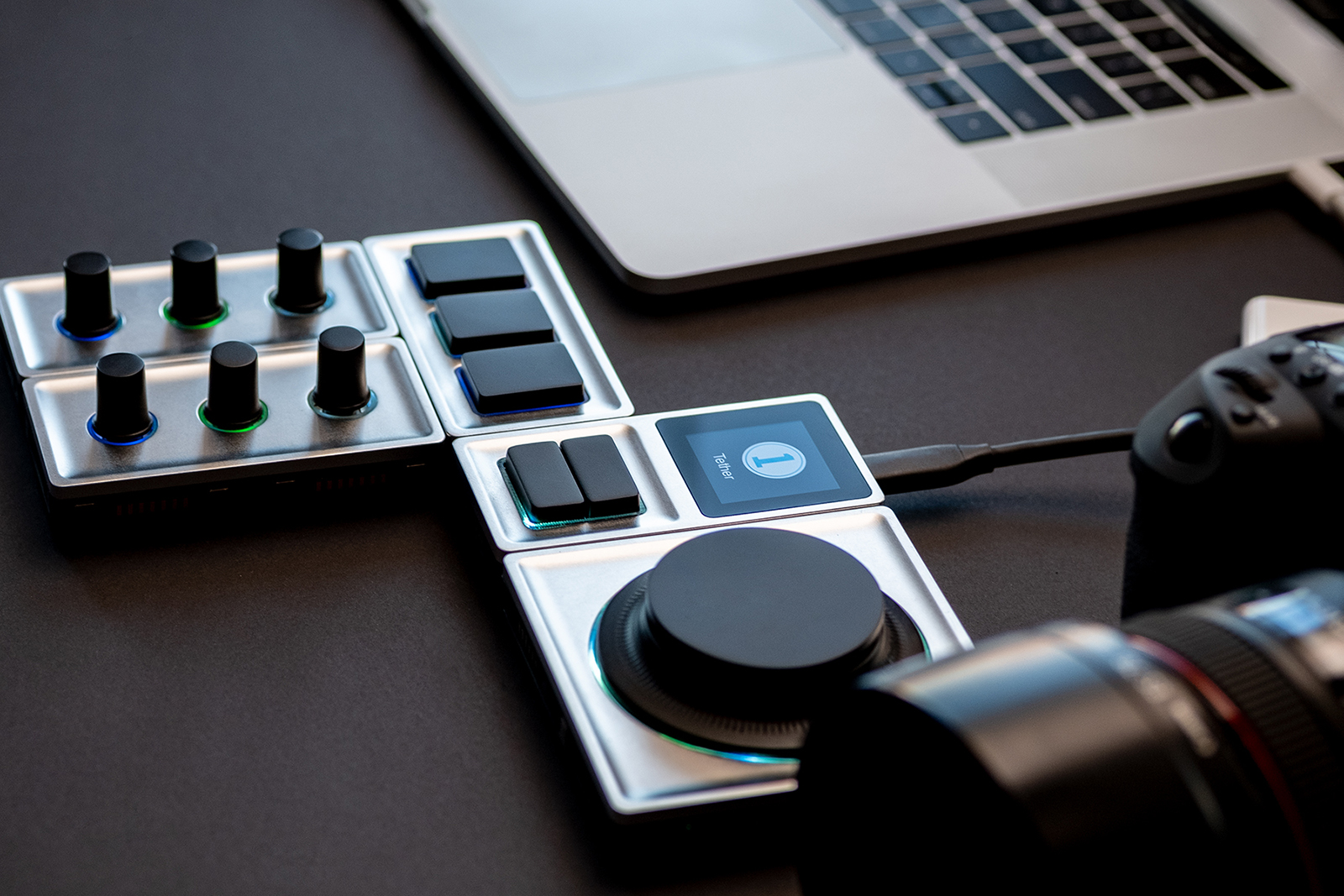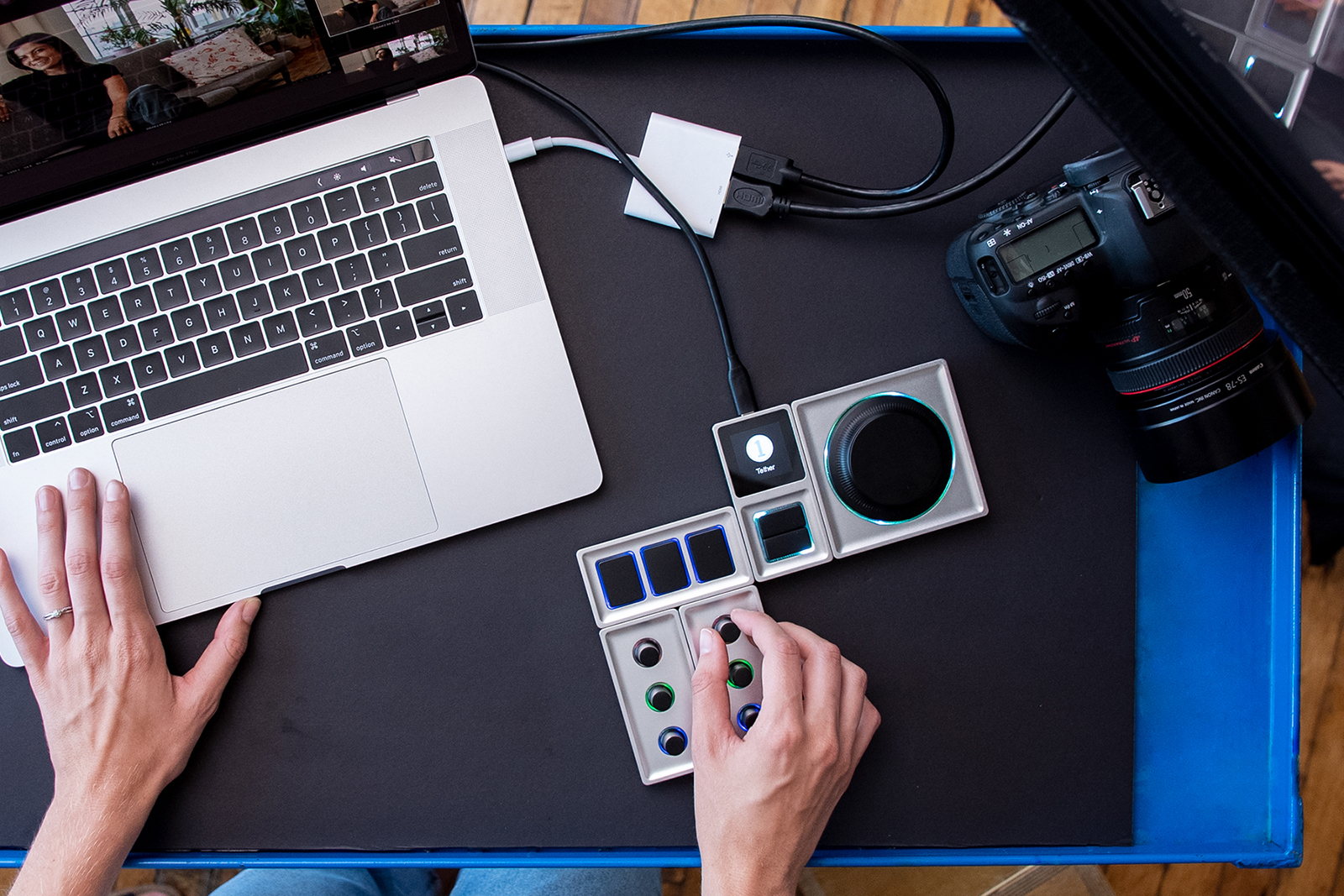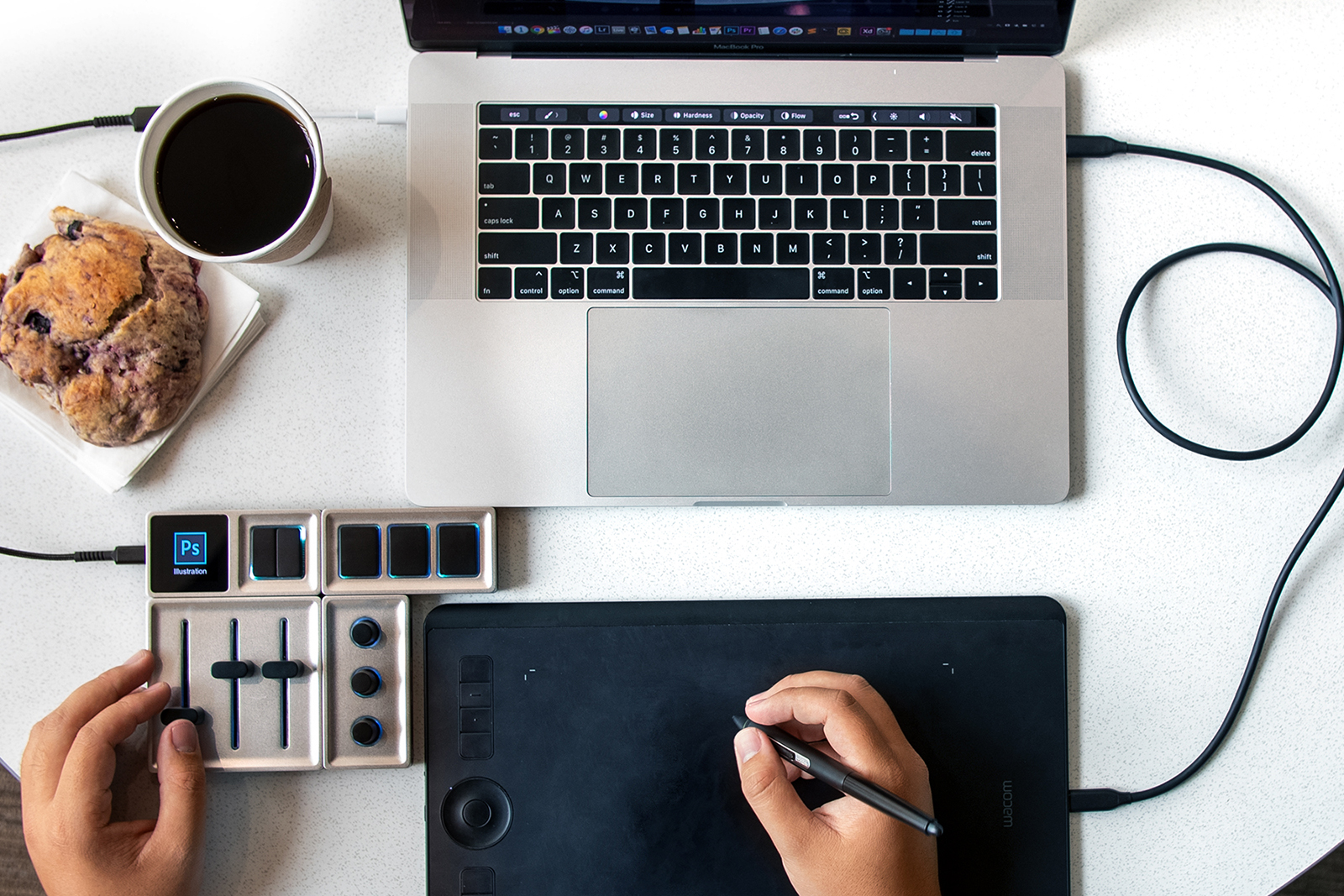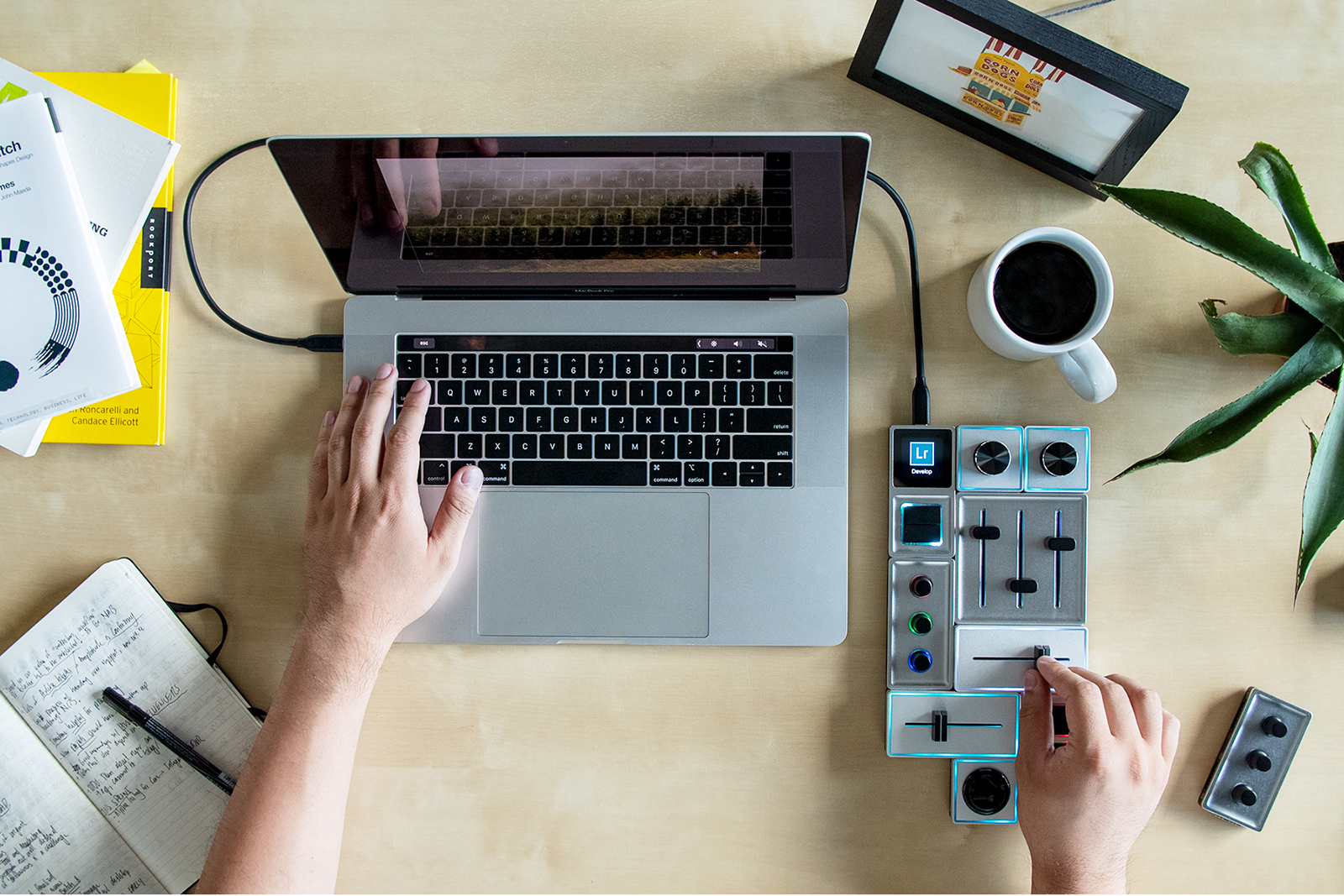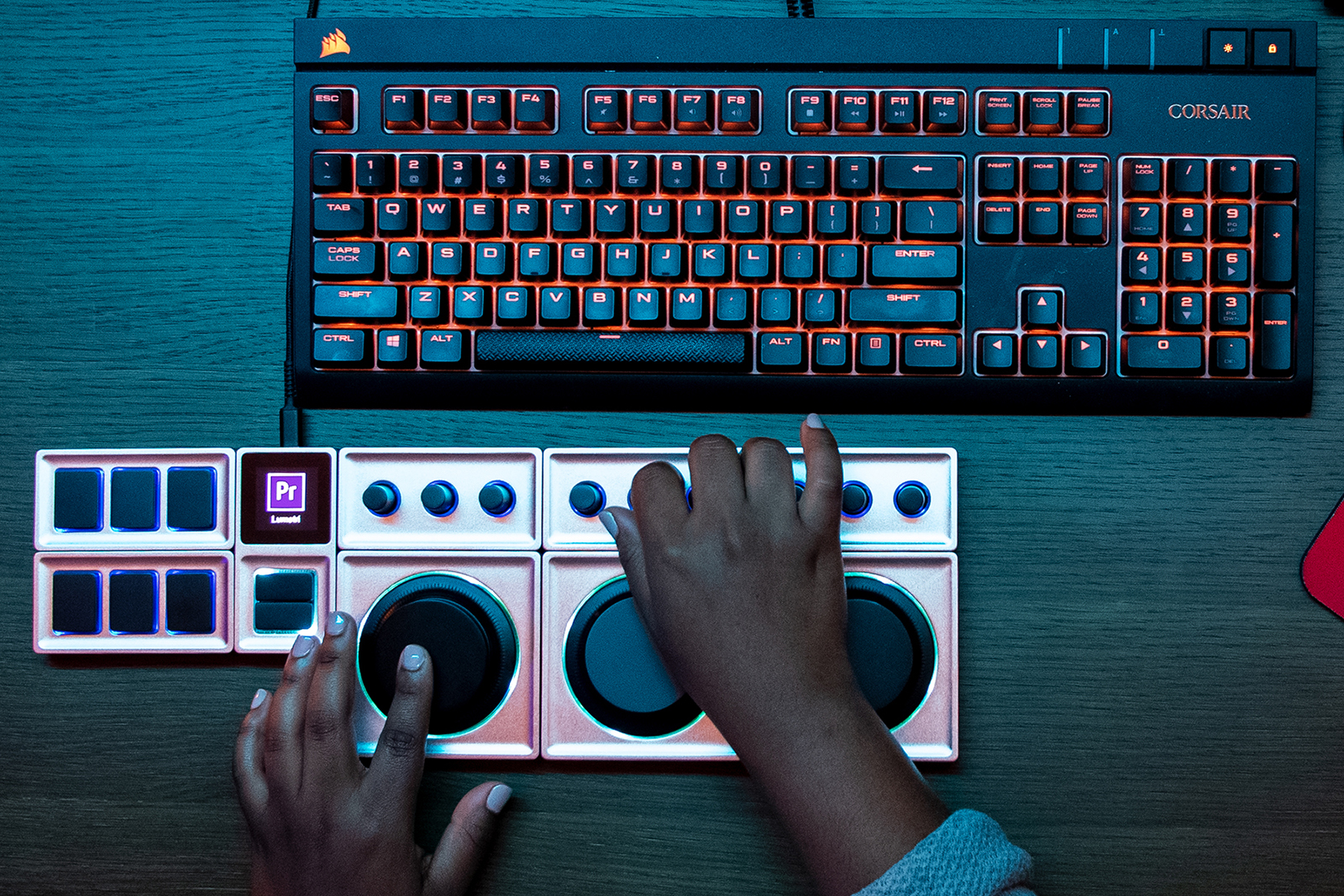The company that launched a vendetta against menus and mouse clicks to create a faster, tactile photo and video editing experience is back. Monogram, formerly Palette Gear, launched a new creative console on Kickstarter on Monday, September 16. Monogram Creative Console is a modular control system that brings new slimmer, more responsive sliders, dials, and keys to editing.
The new system is headlined by a new Orbiter module, a new type of control that uses a pressure-sensitive disk surrounded by an encoder ring. The single piece, Monogram says, allows for three dimensions of different controls and is ideal for color grading, along with trimming video clips and more.
Like the original Palette Gear, the system uses a magnetic connection to allow custom configuration, leaving the user to arrange the different controls to their own editing style. Along with the new orbiter, the system includes sliders, dials, and keys. Besides the physical location of each control, the different modules can be customized to control up to 135 different functions.
While the buttons, sliders, and dials are inspired from the original Palette Gear, the modules are 40% slimmer than the first version. The company says that each control now has four times the function from before. Updates also focus on improved performance and power for each module.
The Monogram Creative Console can be used with any software, similar to how keyboard shortcuts and mouse actions are reprogrammed for different applications, including Adobe Premiere Pro, Photoshop, Lightroom Classic, and Phase One’s Capture One. The controls’ sensitivity, along with range and granularity, can also be adjusted.
Designed with aluminum, the company says the system is designed for both durability and portability. The new controls will be compatible with the original Palette Gear controls despite the design differences.
Palette Gear aimed to change digital photo and video editing by creating a tactile control system at the company’s launch on Kickstarter in 2013. The control console now has more competition today with options like the Loupedeck and TourBox, but takes a unique approach with the ability to re-arrange the controls using the magnetic connection.
The newly renamed company is aiming to launch the updated console through crowdfunding on Kickstarter, with the campaign live today, September 16. If the campaign is successful, early backers could pick up the new control console for pledges starting at $299.
Editors' Recommendations
- The best monitors for photo editing
- What is Photoshop Camera? How Adobe’s new A.I. app edits photos before you take them
- Is the iPad Pro ready for real photo editing? I ditched my MacBook to find out
- Adobe Photoshop Elements is getting so good, it edits photos for you
- After Lightroom and Photoshop, Loupedeck brings tactile edits to Camera RAW


